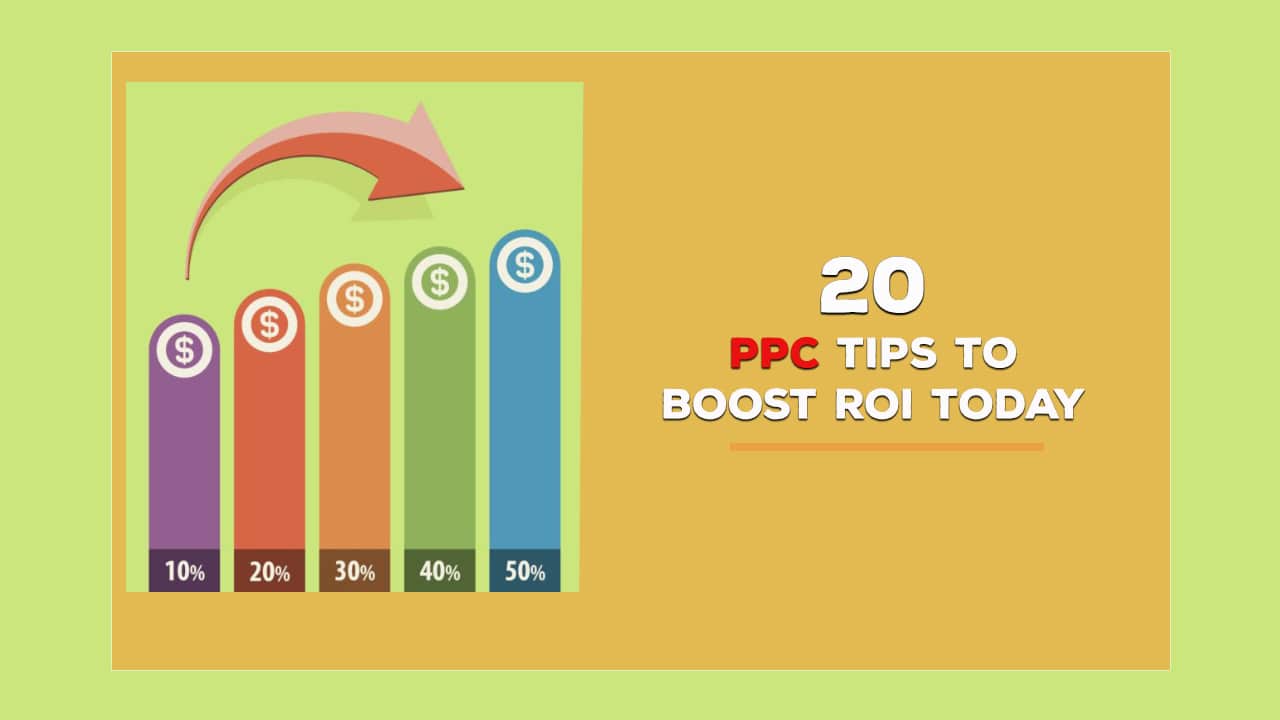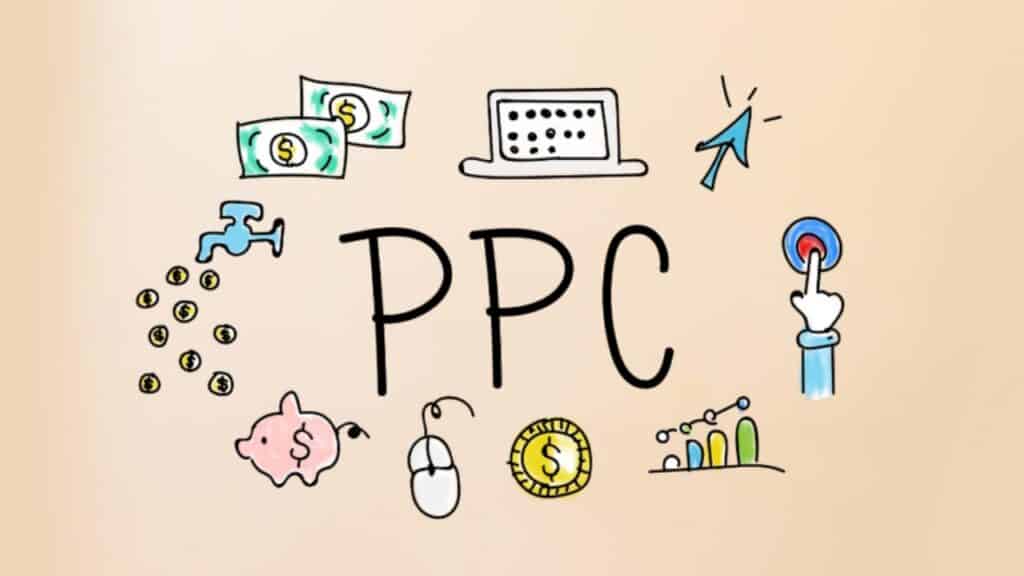Pay-per-click (PPC) advertising is a powerful way to reach your target audience and grow your business online. With PPC, you only pay when someone clicks on your ad, making it a cost-effective option for many companies. But creating successful PPC campaigns takes skill and know-how.
Good PPC campaigns can bring in new customers and boost your sales quickly. They let you appear at the top of search results and on popular websites where your ideal customers hang out.
This article will give you 20 tips for improving your PPC campaigns. You’ll learn to pick the right keywords, write great ads, and get more people to click and buy from you.
Understanding the Basics of PPC Campaigns
PPC campaigns can boost your online visibility and drive targeted traffic to your website. They offer quick results and precise audience targeting, making them a powerful tool for businesses of all sizes.
What is PPC?
PPC stands for pay-per-click advertising. It’s a model where you pay each time someone clicks on your ad. Google Ads is the most popular PPC platform, but others like Bing Ads and social media platforms offer PPC options.
Here’s how PPC works:
- You create ads
- Choose keywords to target
- Set a budget
- Bid on ad placement
When someone searches for your keywords, your ad may show up. You only pay if they click on it. This makes PPC a cost-effective way to reach potential customers.
Benefits of PPC Campaigns
PPC campaigns offer several advantages for businesses:
- Quick results: Your ads can appear at the top of search results almost instantly
- Targeted reach: You can show ads to specific audiences based on location, interests, or behavior
- Budget control: You set how much you want to spend daily or monthly
- Measurable ROI: Track clicks, conversions, and costs easily
- Flexibility: Adjust your campaigns anytime based on performance
PPC also complements other marketing efforts. It can boost your SEO strategy by driving traffic to your site and helping you test keywords.
Key PPC Terminology
To run effective campaigns, you need to know these terms:
- CPC (Cost-per-click): The amount you pay for each click on your ad
- CTR (Click-through rate): The percentage of people who click on your ad after seeing it
- Quality Score: Google’s rating of your ad quality and relevance
- Ad Rank: Determines your ad position on the page
- Conversion: When a user takes a desired action after clicking your ad
Understanding these metrics helps you optimize your campaigns. For example, improving your Quality Score can lower your CPC and boost your ad position.
| Term | Definition |
| CPC | Cost per click |
| CTR | Click-through rate |
| QS | Quality Score |
| CR | Conversion Rate |
You’ll be better equipped to create and manage successful PPC campaigns by grasping these basics.
Tips for Creating Effective PPC Campaigns in 2024
Creating an effective PPC campaign requires careful planning and execution. You need a solid strategy, the right platform, and a well-planned budget.
Start by setting clear goals for your campaign. Do you want more sales, leads, or brand awareness? Pick specific targets like “increase website traffic by 20%” or “get 50 new signups per month.
Next, research your target audience. Find out their age, location, interests, and online habits. This helps you create ads that speak directly to them.
Choose keywords that match what your audience is searching for. Use tools like Google Keyword Planner to find popular, relevant terms. Mix broad and specific keywords to reach a wide range of potential customers.
Create compelling ad copy that grabs attention and offers value. Use strong calls-to-action like “Buy Now” or “Sign Up Today” to encourage clicks.
Monitor your ROI closely. Track key metrics like click-through rate, conversion rate, and cost per conversion. Use this data to optimize your spending and improve results over time.
Remember, PPC is an ongoing process. Keep testing and refining your approach to get the best return on your investment.
1. Target Relevant Keywords
Picking the right keywords is critical for your PPC campaigns. You want words that match what people are searching for. This helps your ads show up at the right time.
- Start by making a list of words related to your product or service. Think about what your customers might type into a search engine. Use tools like Google’s Keyword Planner to find popular search terms.
- Focus on specific, long-tail keywords. These are phrases with three or more words. They often have less competition and can be cheaper to bid on. Plus, they usually show more intent to buy.
- Don’t forget about negative keywords. These tell Google when not to show your ads. This saves you money on clicks that won’t lead to sales.
- Test different keywords to see what works best. Keep an eye on your click-through rates and conversion rates. Adjust your keyword list based on what you learn.
Remember, relevance is crucial. Choose keywords that closely match your offerings. This improves your Quality Score and can lower your costs.
2. Utilize Negative Keywords
Negative keywords are a powerful tool for your PPC campaigns. They help you avoid showing ads to people who are not interested in your products or services.
- To start using negative keywords, list terms related to your business that you don’t want to target. Think about words that might be similar to your products but aren’t quite right.
- Add these negative keywords to your campaign settings. This stops your ads from appearing when people search for those terms. It saves you money and improves your ad performance.
- You can add negative keywords at the campaign or ad group level. Campaign-level negatives apply to all ads in that campaign. Ad group negatives only affect that specific group.
- Keep an eye on your search terms report. It shows you what people are searching for when they see your ads. Use this info to find new negative keywords to add.
- Don’t add too many negative keywords at once. Start with a small list and add more over time. This makes spotting any issues if your ad performance changes suddenly easier.
Remember to review and update your negative keyword list regularly. As your business changes, so should your keyword strategy.
3. Craft Compelling Ad Copy
Writing excellent PPC ad copy is critical to getting clicks. You want your ads to stand out and grab attention. Use keywords that match what people are searching for. This helps your ads show up for relevant searches.
- Make your headlines catchy and direct. They should quickly tell people what you offer. Include your main value proposition to show why you’re the best choice.
- Use emotive words and phrases to connect with readers. This can make your ads more memorable. But keep it simple – avoid jargon or complex language.
- Add a strong call to action that tells people what to do next. “Shop Now” or “Get a Free Quote” work well. This guides users to take the next step.
- Highlight what makes you unique. You could offer free shipping or have won awards. These selling points can set you apart from competitors.
- Test different versions of your ad copy. Try various headlines, descriptions, and calls to action. See which ones get the most clicks and conversions. Keep improving based on what works best.
4. Set a Realistic Budget
Setting a realistic budget is critical to PPC success. You must figure out how much you can spend without breaking the bank.
- Start by looking at your overall marketing budget. How much can you set aside for PPC? Think about your goals, too. What do you want to achieve with your campaigns?
- Consider your industry and competition. Some fields have higher costs per click than others—research average costs in your niche to understand what to expect.
- Don’t forget about testing. Set aside some money to try different ad versions and keywords. This helps you find what works best.
- Be ready to adjust your budget as you go. PPC is not set-and-forget. You may need to spend more or less based on results.
- Remember, it’s okay to start small. You can always increase your budget later as you see positive returns. The key is balancing spending enough to get results and staying within your means.
- Keep track of your return on investment (ROI). This helps you decide if your budget is working for you. You’re on the right track if you’re making more than you’re spending.
5. Test Multiple Ad Variations
Creating different versions of your ads is critical to PPC success. Don’t stick with just one ad. Make several versions with different headlines, descriptions, and calls to action.
- Try changing up your wording and see what works best. You might be surprised by which ads perform better. Testing helps you understand what your audience likes.
- Use A/B testing to compare different ads. This means running two similar ads with a tiny change. It could be a different headline or image. See which one gets more clicks or sales.
- Keep track of how each ad performs. Look at metrics like click-through rates and conversions. Use this data to improve your ads over time.
- Remember to test images, too, not just text. Different visuals can have a significant impact on ad performance. Try various product photos or lifestyle images to see what resonates.
- Be patient with your tests. Give them enough time to gather meaningful data. But don’t wait too long to make changes if something isn’t working.
6. Use Geo-Targeting
Geo-targeting lets you show ads to people in specific locations. This can make your PPC campaigns more effective.
- You can target by country, state, city, or zip code. This helps you reach customers near your business.
- Think about where your ideal customers live or work. Target those areas to get better results from your ads.
- Adjust your bids based on location. Spend more in areas that bring in more sales or leads.
- Use location-specific keywords in your ads. This makes them more relevant to local searchers.
- Create separate campaigns for different regions. This lets you tailor your message to each area.
- Don’t forget about negative geo-targeting. Exclude areas where you don’t want your ads to show.
- Mobile users often search for nearby businesses. Make sure your geo-targeted ads work well on phones.
- Test different location settings to see what works best. Try expanding or narrowing your target area.
- Keep an eye on your location reports. They show how your ads perform in different places.
7. Schedule Your Ads
Timing is vital for PPC success. You need to show your ads when your target audience will most likely see and click them.
- Look at your website analytics to find out when people visit your site most often. This can help you figure out the best times to run your ads.
- Think about your customers’ daily routines. If you sell coffee, early morning might be a good time for your ads. For a pizza place, lunch and dinner hours could work well.
- Use ad scheduling features in your PPC platform. These let you set specific days and times for your ads to appear. You can also adjust your bids for different times of day.
- Test different schedules to see what works best. Try running ads at various times and days of the week. Keep track of which ones get the most clicks and sales.
- Remember to consider time zones if you’re targeting people in different areas. Make sure your ad schedule matches the local time of your audience.
- Don’t forget about seasonal trends. Some products sell better at certain times of the year. Plan your ad schedule around these peak periods for better results.
8. Employ Retargeting Strategies
Retargeting is a powerful way to boost your PPC campaigns. It lets you show ads to people who have already visited your website but didn’t buy anything.
- You can use pixel-based retargeting to track website visitors. This method places a small piece of code on your site. It then shows your ads to those visitors as they browse other websites.
- List-based retargeting is another option. You can upload a list of customer emails to ad platforms. Your ads will then appear for those users when they’re online.
- Try retargeting specific URL visits. If someone looks at a product page, show them ads. This personalized approach often leads to better results.
- Remember to set frequency caps on your retargeting ads. You don’t want to annoy potential customers by repeatedly showing them the same ad.
Retargeting can significantly increase your ad effectiveness. Brands have seen search increases of over 1000% with retargeting ads. Using these strategies, you can bring interested customers back to your site and boost conversions.
9. Optimize for Mobile
Mobile devices are taking over the internet. More people use phones and tablets to browse than ever before. This means your PPC campaigns need to work well on small screens.
- Make sure your ads look good on mobile. Use short headlines and clear calls to action. Your landing pages should load fast and be easy to use on phones.
- Think about how people use mobile devices. They often search on the go or while multitasking. Create ads that grab attention quickly and get right to the point.
- Consider mobile-specific ad formats. These can include click-to-call buttons or location extensions. They make it easy for mobile users to take action.
- Test your ads on different devices. What looks good on a computer might not work on a phone. Make adjustments to improve the mobile experience.
- Don’t forget about load times. Mobile users are impatient. If your page takes too long to load, they’ll leave. Optimize images and simplify your design for faster loading.
- Track mobile performance separately. You might find that mobile users behave differently than desktop users. Use this data to fine-tune your mobile campaigns.
10. Use Ad Extensions
Ad extensions are a powerful tool for your PPC campaigns. They give your ads extra space and information. This helps them stand out from the crowd.
Different types of extensions can boost your ads. Sitelink extensions add extra links to your ad. These can point to specific pages on your site. Call extensions: let people call you with one click.
Location extensions show your business address. This is great for local searches. Review extensions display positive feedback from happy customers. Structured snippets list critical features of your products or services.
Using extensions can improve your click-through rate. They make your ads more useful and relevant. This can lead to better ad performance and lower costs.
Remember to keep your extensions up-to-date. Test different combinations to see what works best. You can make your PPC ads more effective and get better results with the right extensions.
11. Monitor Your Quality Score
Your Score plays a significant role in your PPC success. It affects how often your ads appear and how much you pay for clicks. Google looks at three main things when deciding your quality score.
- First, they check how relevant your keywords are to your ads. Make sure your ad text matches what people are searching for. Use your keywords in your headlines and descriptions.
- Next, they look at your click-through rate (CTR). This shows how many people click your ad compared to how often it’s displayed. A higher CTR means your ad is more relevant to searchers.
- Lastly, Google checks your landing page. It should be easy to use and have content that matches your ad. Make sure your page loads fast and works well on mobile devices.
- To improve your Quality Score, focus on these areas. Test different ad copy to see what gets more clicks. Remove keywords that aren’t performing well. And always make your landing pages better.
- Keep an eye on your Quality Score in your Google Ads account. If it drops, take action right away to fix any issues. A good Quality Score can help you get more clicks for less money.
12. Analyze Competitor Strategies
Looking at your rivals’ actions can give you an edge in PPC. Start by finding out who your main competitors are in paid search.
- Check which keywords they’re bidding on. This can show you new opportunities or areas where you might be overspending.
- Look at their ad copy. What messages are they using to grab attention? You might spot ways to make your ads stand out more.
- Study their landing pages, too. How do they design them? What offers do they feature? This can inspire ideas to improve your pages.
- Don’t forget to check if they’re using ad extensions. These extra bits of info can make ads more eye-catching and valuable.
- Pay attention to when their ads show up. Are they running at certain times or on specific days? This could reveal good times for you to advertise.
- Tools like SEMrush or SpyFu can help you dig deeper into competitor strategies. They show estimates of ad spend and performance.
Remember, the goal isn’t to copy others. It’s to learn from them and find ways to do better. Use what you discover to tweak your campaigns.
13. Leverage Remarketing Lists
Remarketing is a powerful tool for your PPC campaigns. It lets you show ads to people who have already visited your website. This keeps your brand fresh in their minds.
- You can create different lists based on user behavior. For example, you might target people who added items to their cart but didn’t buy. Or those who visited specific pages on your site.
- These lists help you tailor your ads to specific groups. You can show them products they looked at before. Or offer special deals to encourage them to come back.
- Remarketing often leads to higher conversion rates. People who know your brand are more likely to click and buy. It’s also usually cheaper than targeting new customers.
- To get started, add a remarketing tag to your website. This lets you track visitors and build your lists. Then, create custom ads for each list. Make sure your message matches what those users are interested in.
- Don’t forget about time limits. Set an end date for your remarketing campaigns. This prevents annoying users with too many repeat ads.
- Try different ad formats for remarketing. Display ads, text ads, and video ads can all work well. Test to see which ones your audience responds to best.
14. Implement Conversion Tracking
Conversion tracking is critical to measuring your PPC campaign’s success. It lets you see which ads lead to sales, sign-ups, or other actions you want.
- Setting up conversion tracking is simple. First, create a conversion action in your ad platform. This could be a purchase, form submission, or page view.
- Next, add the tracking code to your website. This code connects user actions to your ads. Ensure it’s on the right pages, like thank you pages after purchase.
- Once set up, you can see how many conversions each ad gets. You’ll also learn the cost per conversion. This helps you spend your budget wisely.
- Use this data to improve your ads. Focus on the ones that bring the most conversions at the lowest cost. Stop or change advertisements that aren’t working well.
- Remember to track different types of conversions. Some might lead directly to sales. Others might be steps along the way, like newsletter sign-ups.
- Check your conversion data often. Look for trends and patterns. Use what you learn to make your PPC campaigns better over time.
15. Regularly Review and Adjust Bids
Keeping a close eye on your bids is essential to PPC success. You need to check and update them often to get the best results.
Don’t set your bids and forget them. Look at how each keyword is doing every week or two. Are some keywords getting lots of clicks but no sales? You should lower those bids.
Conversely, you could raise the bid if a keyword brings in good sales. This might help you get even more profitable traffic.
Pay attention to your ad position, too. You should bid higher if you’re not showing up on the first page. But don’t overbid just to be on top. Sometimes, the second or third spot can be more cost-effective.
Use the data Amazon gives you to make intelligent choices. Look at your ACoS (Advertising Cost of Sale) for each keyword. You may need to lower your bid or pause that keyword if it’s too high.
Remember, the correct bid today might not be right next week. Markets change, and competitors come and go. Stay on top of your bids to keep your campaigns running smoothly.
16. Focus on Ad Relevance
Ad relevance is critical to PPC success. Your ads need to match what people are searching for. This helps you get more clicks and better results.
- Make sure your ad text includes your target keywords. Use them in your headlines and descriptions. This shows users that your ad is relevant to their search.
- Your landing page should also match your ad content. If someone clicks on an ad for red shoes, take them to a page about them. Don’t send them to your homepage or a general shoe category.
- Use ad extensions to provide more information about your business. These can include phone numbers, addresses, or links to specific pages on your site. Extensions make your ads more helpful and relevant.
- Test different versions of your ads. Try different headlines and descriptions. See which ones get the best response. Keep improving your ads over time to make them more relevant and effective.
17. Segment Your Audience
Splitting your audience into groups helps your PPC campaigns work better. You can show different ads to different people based on what they like and do.
- Start by looking at who buys from you now. What are they like? How old are they? Where do they live? This info helps you make groups.
- Next, think about what each group wants. Young people might care about different things than older folks. Men and women sometimes look for other stuff, too.
- Use these groups when you set up your PPC ads. Pick the right words and pictures for each one. This way, your ads will speak right to them.
- Don’t forget to test your groups. Try different ads with each one. See which ones work best. Keep changing things to make your ads better and better.
- Breaking up your audience can make your PPC money go further. Your ads will reach the right people with the right message. This means more clicks and more sales for you.
18. A/B Test Landing Pages
A/B testing your landing pages is critical to improving your PPC campaigns. This method lets you compare two page versions to see which one performs better.
- Start by choosing one element to test, like the headline or call-to-action button. Create two versions of your landing page, changing only that one element.
- Next, split your traffic between these two versions. Let the test run for at least a week to gather enough data. Ensure you have a clear goal, such as increasing conversions or click-through rates.
- After the test, look at the results. Which version did better? Use this information to update your landing page. Then, move on to testing another element.
- Remember, small changes can make a big difference. Even tweaking the color of a button or the wording of your headline can impact your results.
- Keep testing regularly. What works today might not work tomorrow. By constantly improving your landing pages, you’ll boost the effectiveness of your PPC campaigns over time.
19. Maintain Consistent Messaging
Keeping your PPC message steady across ads and landing pages is critical. When you make a promise in your ad, ensure your landing page follows through. This builds trust with people who click on your ads.
- Use the exact words and tone in both places. If your ad discusses a sale, your landing page should, too. This helps people know they’re in the right spot.
- Make your brand voice clear in all parts of your PPC campaign. Use the same style in your ads, landing pages, and follow-up emails. This makes your brand easy to spot and remember.
- Test different messages, but keep them similar. You can try new ways to say things but don’t change your core message. This keeps people from getting confused.
- Check your messaging often. Ensure it still fits with what you’re selling and what people want. Minor tweaks can keep your ads fresh while staying true to your brand.
20. Implement Conversion Rate Optimization
Conversion rate optimization (CRO) is vital for PPC success. It helps you get more value from your existing traffic.
- Start by analyzing your current conversion rates. Look at which pages and ads perform best. Use this data to make improvements.
- Test different landing page designs. Try changing headlines, images, or call-to-action buttons. Minor tweaks can lead to significant gains.
- Speed up your website. Faster loading times often mean higher conversion rates. Remove unnecessary elements that slow things down.
- Make your forms simpler. Ask only for essential information. The easier it is to convert, the more likely people will do it.
- Use clear, compelling calls to action. Tell visitors exactly what you want them to do next. Make buttons stand out visually.
- Add trust signals like customer reviews or security badges. These can reassure potential customers and boost conversions.
- Consider offering a guarantee or free trial. This can reduce perceived risk and encourage more people to take action.
- Keep testing and refining your approach. CRO is an ongoing process. What works today might not work tomorrow.
Optimizing PPC Performance
Improving your PPC campaigns can lead to better results and higher returns on investment. To boost performance, focus on critical areas like keyword selection, ad copy, and ongoing monitoring.
Keyword Research and Selection
Start by finding the right keywords for your campaigns. Use tools like Google Keyword Planner to discover relevant terms. Look for a mix of broad and specific keywords that match your products or services.
Group similar keywords into ad groups. This helps you create more targeted ads. Consider using long-tail keywords, which are more specific and often have less competition.
Don’t forget negative keywords. These prevent your ads from showing up for irrelevant searches. Add them to your campaigns to save money and improve click-through rates.
Creating Effective Ad Copy
Write clear and compelling ad headlines. Include your primary keyword and highlight your unique selling points. Keep your message short and to the point.
Use call-to-action, solid phrases in your ads. Words like “Buy Now,” “Learn More,” or “Get Started” can encourage clicks. Test different versions to see what works best.
Make sure your ad text matches your landing page. This consistency improves user experience and can boost your quality score.
Monitoring and Adjustment
Check your campaign performance regularly. Look at metrics like click-through rate, conversion rate, and cost per click. Use this data to make informed decisions about your campaigns.
Try A/B testing different ad elements. Change one thing at a time, like the headline or call-to-action. This helps you find what resonates best with your audience.
Adjust your bids based on performance. Increase bids for keywords that convert well and lower them for underperforming ones. Consider using automated bidding strategies to save time and optimize for your goals.
Summary
Optimizing your PPC campaigns in today’s competitive digital landscape is essential for maximizing ROI and achieving business success. Applying the 20 strategies outlined in this guide can enhance your keyword targeting, craft compelling ad copy, and refine your bidding strategies.
Techniques like using negative keywords, geo-targeting, and ad scheduling allow you to reach the right audience at the right time. At the same time, tools like conversion tracking and A/B testing provide valuable insights for continuous improvement.
Regularly reviewing and adjusting your campaigns based on performance data ensures you stay ahead of the competition and maximize your PPC investment.
By implementing these tips, you’ll be well-equipped to boost your PPC campaign performance and drive better results for your business.









































